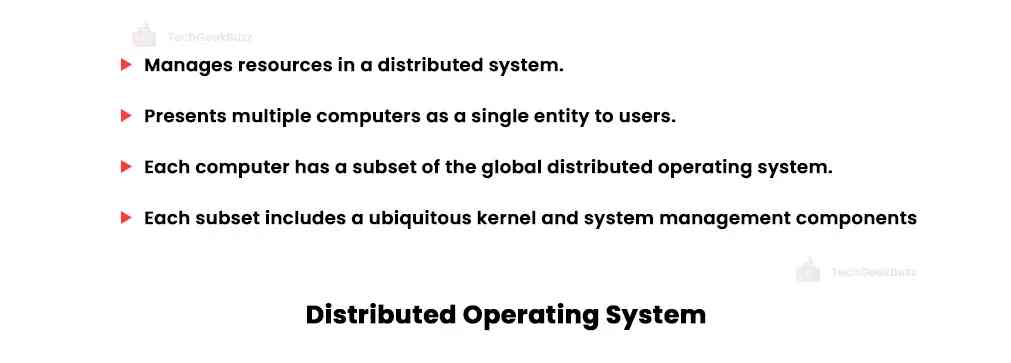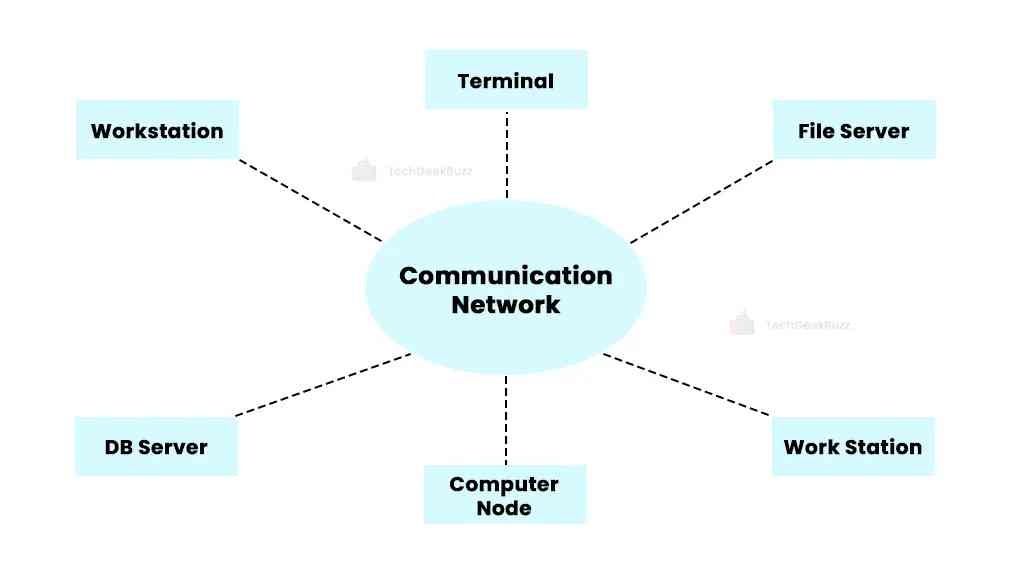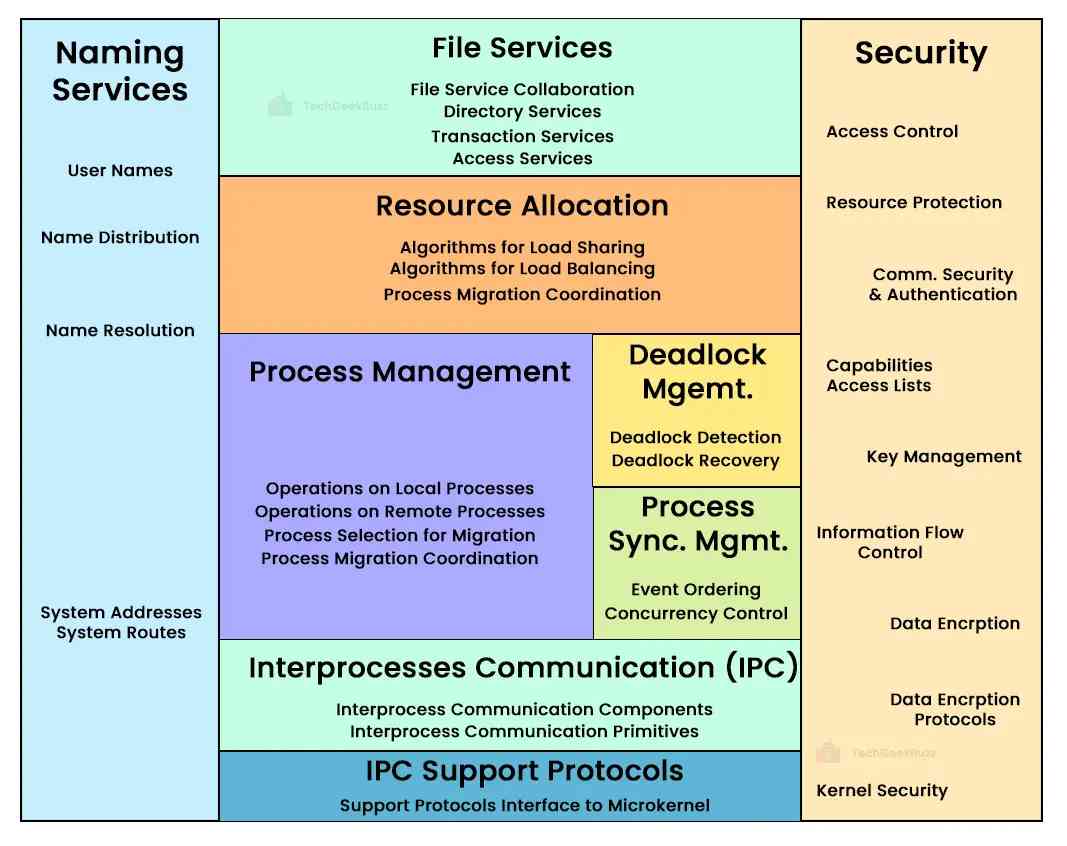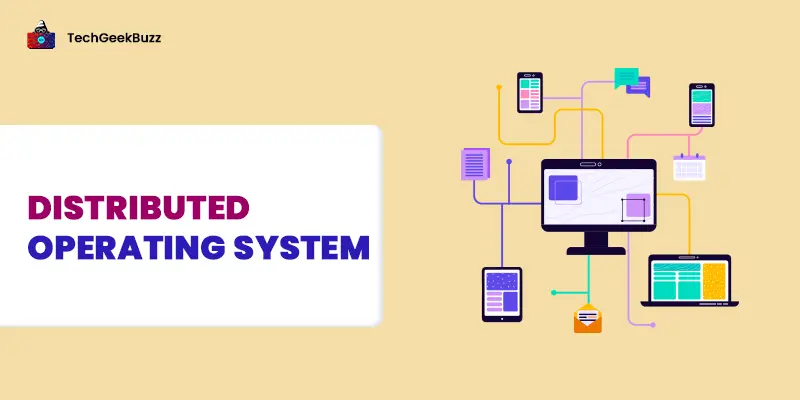A distributed system is a computing environment that combines multiple computer systems and software components to accomplish a certain task or goal. A centralized computer system manages all these computer systems.
However, it is important to note that these computers are located at different physical locations. Yet, they are connected through a local area network (LAN) or the internet. Users feel that these networked computers are standalone systems functioning on their own.
But have you wondered how resource allocation and management occur in a distributed system? This is where the role of a distributed operating system comes into play.
This blog post aims to help you understand about a distributed operating system.
So, let us get started!
What is a Distributed Operating System?

A distributed operating system is software that provides services to all computers in a distributed system. It is in charge of managing the resources of a distributed system.
In other words, a distributed operating system hides the existence of multiple computers in a distributed system and presents as a single computer to users. It combines all networked machines and presents them as a virtual uniprocessor.
Each computer system in a computing environment has a specific subset of the global aggregate operating system. This implies each computer has a part of a distributed operating system. The segment or piece of operating system software on each computer is responsible for managing its resources.
Note: In terms of computing, a single computer in a distributed environment is referred to as a ‘node’ .
Each subset of an operating system is made of two service provisioners. They are:
- A ubiquitous kernel or microkernel that controls a computer’s hardware.
- A collection of system management components that controls a computer’s individual and collaborative activities.
These two components work together to integrate several resources and processing capacities of multiple CPUs into a single system.
Additionally, a distributed operating system handles tasks or activities that require a combined power of multiple CPUs. It delegates these tasks among computers in a network, which their respective processors execute.

Features of a Distributed Operating System
Here are some salient features of a distributed operating system:
- It dynamically and automatically allocates jobs or tasks to several network computers in a system for processing. This implies a user is not in charge of selecting a machine for task execution, unlike a network operating system .
- Users do not have to keep track of the resource location to access it. This implies users do not know the exact location of their files in a distributed system.
- They can use the same system call to access both remote and local files or resources.
- A distributed computing system has a single systemwide operating system called the distributed or global OS. Each computer has a part of this global OS.
- This OS manages the resources and processes of all machines globally.
- A distributed OS possesses fault-tolerance capability. Failed machines in a distributed system do not affect most users.
Components of a Distributed Operating System
A distributed operating system provides all the essential services a normal operating system does. However, some additional configurations and attributes enable it to support extra requirements, such as availability and scalability. It disguises itself as a single, monolithic operating system to users. This implies even if a distributed operating system has multiple nodes, it seems to be a single node for users.
As discussed above, each part or segment of a distributed operating system has a kernel and system management components. Let us see what they do.
1. Kernel
The kernel provides a set of node-level utilities for each node. These node-level utilities operate a node’s underlying hardware and resources. They perform several mechanisms, including allocating, managing, and depositing a node’s resources, communication, processes, and input/output management support functions.
The communication sub-system within the kernel is paramount for a distributed OS. The kernel is in charge of performing a minimal set of functions, as follows:
- Low-level address space management
- Thread management
- Interprocess communication (IPC)
Hence, it is often referred to as a microkernel. It is modular in nature, which enhances the reliability and security of a distributed OS.
2. System Management Components

System management components are part of a distributed OS outside the kernel. They are processes that define a node’s policies. Their functions include:
- High-level communication
- Process and resource management
- Reliability
- Performance
- Security
These components provide the transparency required in a distributed OS while performing the same functions as a single-entity system.
Due to the design of a distributed OS, additional services are required to meet an individual node’s responsibilities with the global system. System management components also ensure the availability, persistence, and dependability of a node. However, these responsibilities can clash with each other.
Hence, a consistent approach and a deep understanding of the overall system is essential. Using separate policies and mechanisms for each node and the global system can resolve clashes.
Design Issues of a Distributed Operating System
Here are some design issues that must be considered while designing a distributed OS:
1. Transparency
The foremost goal of a distributed OS is to combine multiple machines and provide a single system image to users. It aims to hide the existence of multiple machines in a computing environment.
As a result, while designing a distributed OS, it is important to consider that the collection of distinct machines (connected through a communication subsystem) must appear as a virtual uniprocessor to users.
ISO’s Reference Model for Open Distributed Processing identified the eight forms of transparency. They are as follows:
- Access transparency
- Location transparency
- Replication transparency
- Failure transparency
- Migration transparency
- Concurrency transparency
- Performance transparency
- Scaling transparency
2. Reliability
A distributed OS must be more reliable than a centralized OS. It has the existence of multiple instances of resources. However, this feature alone is not sufficient to ensure the reliability. The operating system that manages all these resources should be designed properly to increase reliability.
For any system to be reliable, it must be able to prevent or recover from errors. Fault avoidance, fault tolerance , and fault detection and recovery are some of the foremost techniques for dealing with faults.
3. Performance
The performance of a distributed system should be better than or at least equal to the performance of a centralized system. It is very important to take care of the designing of various components of a distributed OS. Otherwise, the overall performance of an application running on a distributed system will be lower or worse than a centralized system.
4. Scalability
Scalability refers to the ability of a system to adapt to increased workload. In a distributed system, it is common for new machines in a network to get added over time. Hence, it becomes essential to design an operating system that can easily handle the increase in the number of nodes.
5. Security
Security is paramount in any computing environment. All the resources in a network should be protected against any unauthorized access or destruction. Implementing security in a distributed system is pretty challenging because of the lack of a single point of control and the use of an insecure network.
Where is the Distributed Operating System Used?
The distributed OS is used in scenarios where there is a need for multiple machines to work as a single system. Here are some applications of a distributed OS:
- Networked Environment
- Cloud Computing
- Distributed Database
- Distributed File System
- Real-time Systems
- Internet of Things (IoT)
- Sensor Network
Conclusion
A distributed operating system is one that demonstrates itself to users as a single, centralized operating system. However, the truth is it runs on several independent CPUs. The use of multiple processors (computer systems) is invisible to end users. In other words, users view a distributed system as a virtual uniprocessor rather than a collection of multiple machines.
When there is a need for multiple computer systems and other computing devices to work together as a single system, a distributed operating system comes in handy.
We hope this article was helpful in understanding the concept of the distributed OS. If anything seems confusing or difficult to understand, feel free to comment below.
People are also reading:


![What is an Assembler? [Definition, Working, & Types]](/media/new_post_images/What_is_Assembler.jpg)
![What is I/O? [Types, Examples, & Methods]](/media/new_post_images/What_is_I_O.webp)

Leave a Comment on this Post